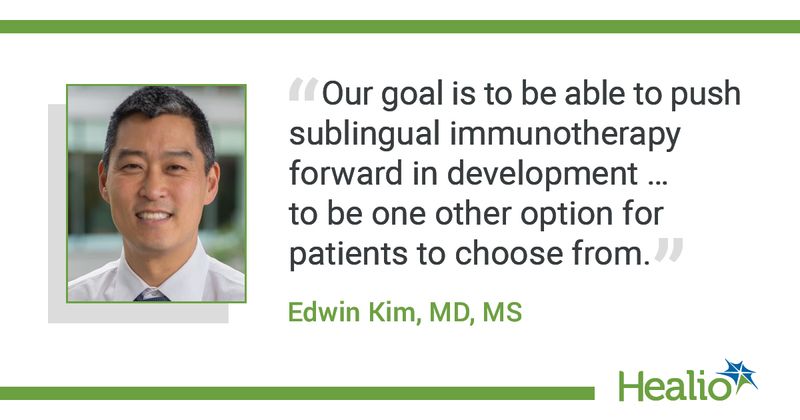Peanut sublingual immunotherapy shows promise in toddlers
A study found that “significant desensitization” occurred among peanut-allergic toddlers following peanut sublingual immunotherapy, according to data presented at the annual meeting of the American Academy of Allergy, Asthma & Immunology.
Edwin Kim, MD, MS, associate professor of medicine and pediatrics in the division of rheumatology, allergy and immunology at the University of North Carolina, and colleagues conducted a double-blind, placebo-controlled food challenge among 50 toddlers aged 1 to 4 years with confirmed peanut allergy.

They randomly assigned toddlers to receive either peanut sublingual immunotherapy (PNSLIT) at a daily maintenance dose of 4 mg peanut protein for 36 months or a placebo. Among the 50 participants, 19 in the therapy arm and 17 in the placebo arm completed the desensitization double-blind, placebo-controlled food challenge.
“The median amount that the kids on treatment were able to eat was the maximum that we pushed it to, which is 4,443 mg, without any symptoms at all, compared to just 143 mg in the placebo group,” Kim told Healio.
Of the 19 toddlers receiving PNSLIT, 14 passed the desensitization food challenge compared with none in the placebo group, the researchers reported. After 3 months, 12 toddlers in the therapy arm passed a sustained unresponsiveness analysis compared with in the placebo group.
Peanut skin prick tests decreased in the PNSLIT group from 10 mm to 3.25 mm and increased slightly in the placebo group from 11.5 mm to 12 mm.
“Our goal is to be able to push sublingual immunotherapy forward in development ... to be one other option for patients to choose from,” Kim said.
Kim said the findings built on data from previous research that assessed peanut sublingual immunotherapy in school-aged children.
“What we are interpreting these data to say is, kids who are older absolutely can benefit from this sublingual treatment, but these data do suggest that perhaps being able to start it earlier, start younger, may be even better,” Kim said.
Kim said that if sublingual immunotherapy comes within the first year of the diagnosis of peanut allergy, it “may have the potential to have an even stronger and a longer lasting benefit.”
When assessing symptoms, Kim said older children, specifically teens, tend to have very mild ones — itching of the mouth and a mild rash were most common.
“No patients needed epinephrine to treat any of their side effects, even though all of this dosing — 99.9% of dosing — is done at home,” he said. “Despite that, again, epinephrine wasn't needed because the symptoms were generally mild.”
Kim said the mild symptoms appeared in only 5% of children, whereas the other 95% remained symptom free.
“We think that when it comes to peanut allergy treatment in the future, we really think that options are going to be critical for patients,” Kim said.

